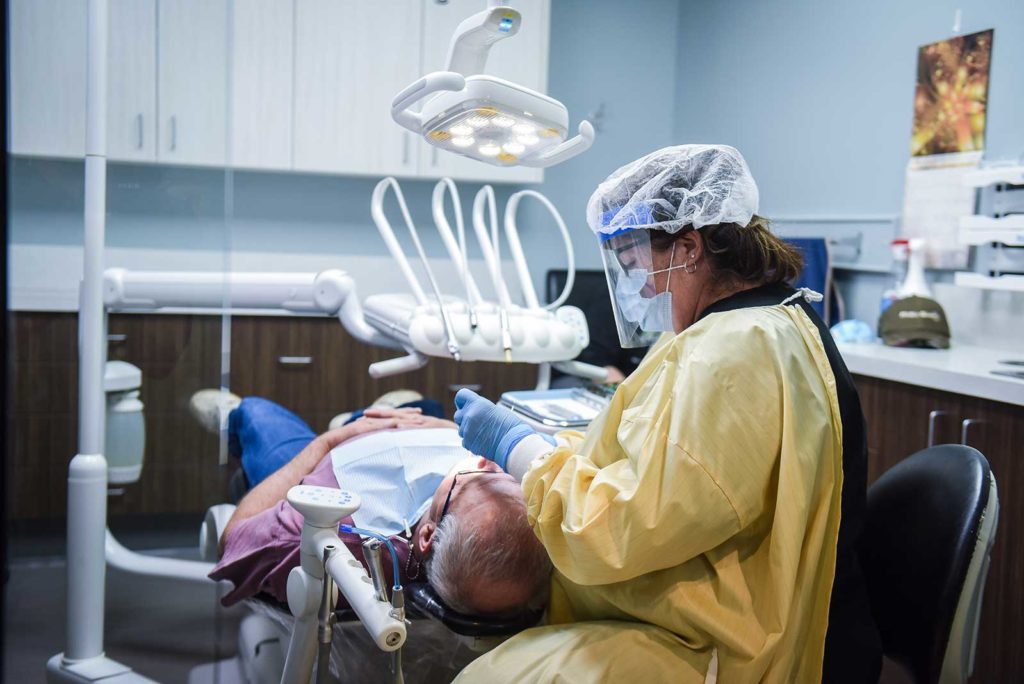Dental Implants in Red Deer
Custom made to match your natural smile
Now a common dental procedure, tooth implants are the prefered way to restore gaps in your smile from missing teeth. Custom made to fit your smile and matched up perfectly with the precise shade of white to match your natural teeth, a modern day tooth implant is virtually imperceptible from your natural teeth. If you have a missing or damaged tooth and are interested to hear how a dental implant could help to restore your smile to it’s full, then give our dentists near you a call today to schedule an appointment and set up your inital implant consultation.
Request an appointment
"*" indicates required fields
What is a dental implant?
Dental Implants are an artificial root made of titanium metal that are inserted into the jawbone to replace the root of the natural tooth. Once the implant is in, an artificial replacement tooth will be attached. The implant acts as an anchor to hold the replacement tooth in place, making it not only comfortable but also discreet as it looks just like natural teeth.
There are many advantages of Dental Implants, which include:
- Improved appearance
- Improved speech
- Improved comfort
- Easier eating
- Improved self esteem
- Improved overall oral health
- Lifelong durability
Contact us today to see if you are a candidate for Dental Implants!

Tooth Implant Procedure
Dental tooth implants are typically done over a couple of visits to your dentist.
On the first visit, your dentist will extract the damaged tooth that is due to be replaced. If your tooth has already been extracted after a previous dental emergency then you’ll be straight onto the next step.
Step two is a bone graft and that usually happens in the same visit. However, this step may not be necessary for all patients. Your dentist will carry out an inspection of the implnt area in your initial consultation to determined if this is required or not. Usually, a bone graft is only required if the jaw bone is not thick or strong enough to support a successful dental implant. Bone grafting may sound like a complex step, but in actual fact this is a fairly quick and simple procedure. Essentially, your dentist is attaching artificial pieces of bone material to your jaw bone, which then encourages new bone to grow around it, thus thickening and strengthening your jawbone.
At this point, your jaw will need a couple of weeks to rest and to let the bone graft take successfully. Once that’s completed, you’ll return to the dental clinic again where your dentist will insert the implant (essentially a small metal screw) into your new improved jawbone. The bodies natural response and healing process will be to grow the bone all around the implant, securing it in place and fusing the bone and the dental implant base together as strongly as possible.
Again, modern dental technology has come a long way in recent years, and you may be surprised at how quick and simple this procedure is. Once the base of the tooth implant has been fixed in place, all that remains is to mould a standard dental crown and attach it to the dental implant. Your dentist will want to wait for some time before attaching the crown in order to give the base of the tooth implant the maximum possible opportunity to heal and to fuse successfully with the bone. Sometimes this can take several months, but your dentist will monitor this and let you know once they feel you are ready to successfully support your new dental crown.
Dental Implant Cost
As you can see from the information above, a tooth implant involves different steps, and might not be the same for all patients.
The best way to get an understanding of your dental implant costs and understand the steps involved for your situation, is to schedule and initial consultation with a dentist. Your dentist will then be able to create a much clearer picture of the exact steps and costs that are involved with your implant. Here at Bower Dental Centre, we are committed to helping our patients to understand their dental health care costs clearly and simply, and we will always try to work with you to maximize your insurance coverage and minimize your out of pocket costs for any procedures we recommend and undertake.
at bower dental centre, we offer
Flexible hours and a full array of dental services to keep your smile healthy
Bower Dental Centre has established a reputation for patient-focused dental services in Red Deer and throughout the surrounding community. We love helping our patients achieve radiant smiles and restoring confidence to their lives.
